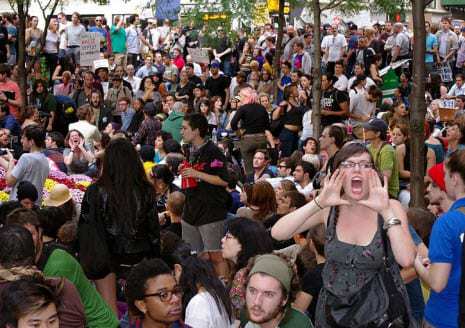
The connection between protests and mobile technology was first made apparent during the recent civil unrest in the Middle East. In Libya, Iran and Egypt, thousands of protestors, who had been cut off from the online world by their nation’s government, flocked to sites like Twitter and Facebook from their smart phones and other mobile devices. This allowed protestors to coordinate their efforts and connect with one another over great distances in a way that was difficult for the government to track. The U.S. is currently faced with a similar swelling of civil discontent, which has manifested as the Occupy Wall Street movement. Mobile technology, particularly augmented reality, may soon serve American protestors in much the same way it did Middle Eastern.
The Occupy movement has relied heavily on the Internet to spread its message. The movement was birthed in the virtual world and thrives on the constant connectivity of the people now involved. In blurring the lines between the physical and digital worlds, the Occupy movement has seen great success in sidestepping several media blackouts, allowing the movement to grow unabated by media politics. Augmented reality may begin to play a role in the movement, as protestors discover that it will allow them to, essentially, Occupy everywhere.
Augmented reality is currently generating a great deal of hype in the marketing and entertainment industries, but it is how the technology is used in art that may best serve protestors. Pop-up art galleries – improvised digital displays of artwork – have been showing up in several major cities around the U.S. In New York City, the Museum of Modern Art has launched its first augmented reality art gallery, which can be viewed with any smart phone. Much of the gallery is found outdoors, where several pieces of digital artwork are strewn about the real world environment.
The same concept behind pop-up art galleries can easily be applied to the Occupy movement. Augmented reality may actually help protestors have a greater impact in the digital world, as it will allow them to go anywhere and protest just about anything.
